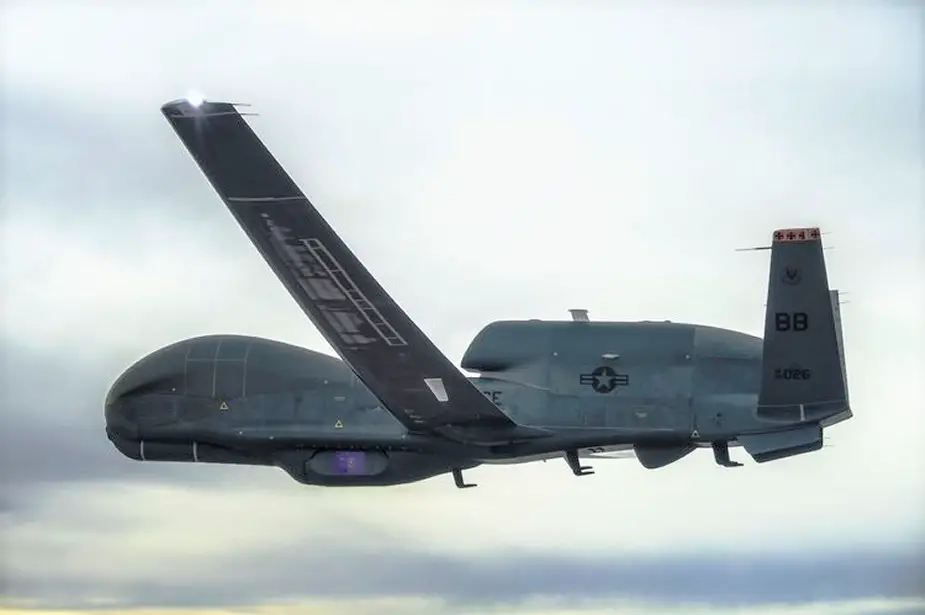Breaking news
Northrop Grumman delivers new capabilities to Global Hawk Autonomous Aircraft.
New MS-177 and upgraded AN/ASQ-230 sensors will enhance multi-spectral image and signals intelligence collection for the U.S. Air Force and Geographic Combatant Commands.
Follow Air Recognition on Google News at this link

Global Hawk takes off equipped with an MS-177 multi-spectral camera system. MS-177 provides high resolution imaging capability for operational users (Picture source: Northrop Grumman)
Northrop Grumman has delivered a pair of sensors to enhance the capability of its Global Hawk high-altitude long-endurance (HALE) autonomous aircraft system. Enhancements include the deployment of the MS-177 multi-spectral camera system to provide additional high resolution imaging capability for operational users. The second new capability is the first fielding of the increment 1 upgraded AN/ASQ-230 system on Global Hawk to meet expanded electronic threats.
The MS-177 camera system provides multiple channels of intelligence collection in visible and infrared bands and provides a dramatic increase in multi-spectral imaging capacity. When paired with a Global Hawk platform, the MS-177 provides collection coverage in areas that cannot easily be reached by other means. Fielding of the AN/ASQ-230 increment 1 enhances Global Hawk’s support against electronic threats.
“Ongoing improvements to Global Hawk underscore Northrop Grumman’s commitment to the United States Air Force’s ISR mission and reducing costs through agile development and leveraged solutions,” said Leslie Smith, vice president, Global Hawk, Northrop Grumman. “New and improved payloads flying on our young, yet proven fleet of aircraft will allow our partners to deploy high value, networked assets to monitor adversaries while not risking the lives of military personnel well into the 2040s.”
Global Hawk’s combination of autonomy, range, endurance and payload, and an average aircraft age of under nine years, make Global Hawk a valuable asset for domestic and international customers with critical ISR collection requirements. The Center for Strategic and Budgetary Assessments recently published a report highlighting the key role systems like Global Hawk play around the globe.
In the future, Global Hawk is uniquely positioned for additional missions that connect the joint force as one, including persistent high capacity backbone, pseudo-satellite communications coverage, and joint all-domain command and control.



















